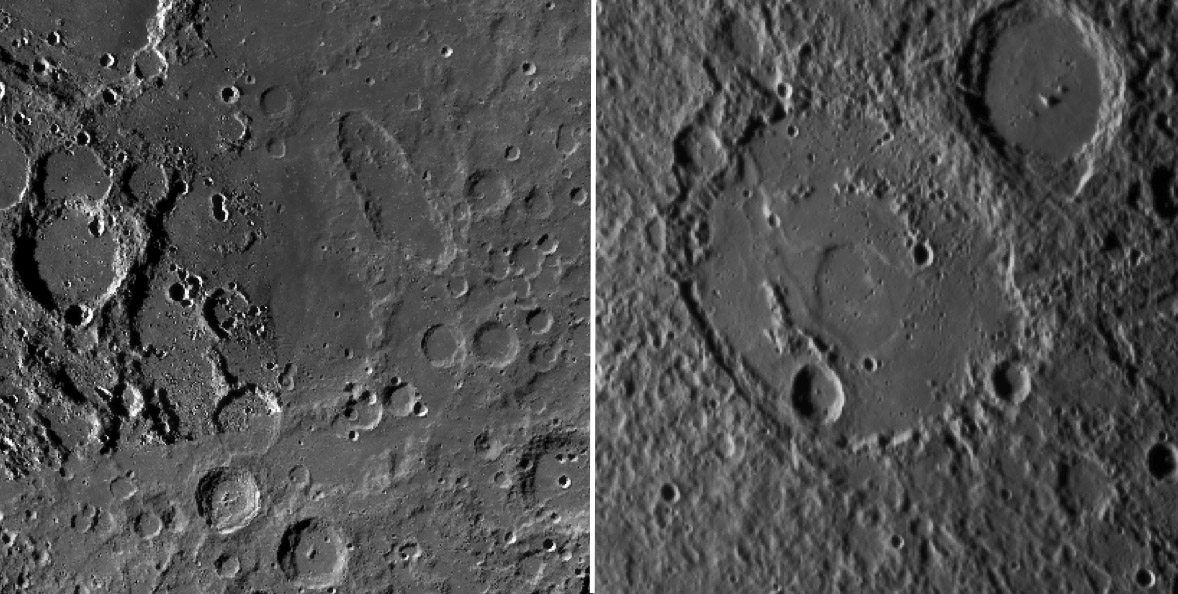Difference between revisions of "March 19, 2011"
| (7 intermediate revisions by the same user not shown) | |||
| Line 1: | Line 1: | ||
__NOTOC__ | __NOTOC__ | ||
=Twins Separated Before Birth= | =Twins Separated Before Birth= | ||
| − | + | <!-- Start of content --> | |
| − | + | <!-- ws:start:WikiTextHeadingRule:0:<h1> --> | |
| − | + | <!-- ws:start:WikiTextLocalImageRule:6:<img src="/file/view/LPOD-Mar19-11.jpg/211912122/LPOD-Mar19-11.jpg" alt="" title="" style="width: 1000px;" /> -->[[File:LPOD-Mar19-11.jpg|LPOD-Mar19-11.jpg]]<!-- ws:end:WikiTextLocalImageRule:6 --><br /> | |
<em>left image from [http://wms.lroc.asu.edu/lroc#damoon LROC WMS Image Map], right image from [http://messenger.jhuapl.edu/gallery/sciencePhotos/pics/M3_Approach_high_res_web.png Messenger Approach image]</em><br /> | <em>left image from [http://wms.lroc.asu.edu/lroc#damoon LROC WMS Image Map], right image from [http://messenger.jhuapl.edu/gallery/sciencePhotos/pics/M3_Approach_high_res_web.png Messenger Approach image]</em><br /> | ||
<br /> | <br /> | ||
| − | Messenger entered orbit around Mercury on Thursday night, and now begins detailed | + | Messenger entered orbit around Mercury on Thursday night, and now begins detailed |
| − | observation of a world similar to the Moon, with surprising differences. Mercury is full | + | observation of a world similar to the Moon, with surprising differences. Mercury is full |
| − | of impact craters and has some volcanism, but there are significant differences of each | + | of impact craters and has some volcanism, but there are significant differences of each |
| − | compared to our standard Moon. One thing that Jim Head and I [http://articles.adsabs.harvard.edu/cgi-bin/nph-iarticle_query?1976LPSC....7.3629W&amp;data_type=PDF_HIGH&amp;whole_paper=YES&amp;type=PRINTER&amp;filetype=.pdf noted] 35 years ago, | + | compared to our standard Moon. One thing that Jim Head and I [http://articles.adsabs.harvard.edu/cgi-bin/nph-iarticle_query?1976LPSC....7.3629W&amp;data_type=PDF_HIGH&amp;whole_paper=YES&amp;type=PRINTER&amp;filetype=.pdf noted] 35 years ago, |
| − | and Messenger images confirm, is that peak ring basins (or two ring basins) are much | + | and Messenger images confirm, is that peak ring basins (or two ring basins) are much |
| − | more common on Mercury than on the Moon. The nearside of the Moon has only one, | + | more common on Mercury than on the Moon. The nearside of the Moon has only one, |
| − | the 335 km diameter Schiller-Zucchius Basin, with its incomplete inner rim and a hint | + | the 335 km diameter Schiller-Zucchius Basin, with its incomplete inner rim and a hint |
| − | of a third inner depression. The 196 km wide basin named Steichen on Mercury (right | + | of a third inner depression. The 196 km wide basin named Steichen on Mercury (right |
| − | image) is remarkably similar, even including an inner depression, albeit even more off- | + | image) is remarkably similar, even including an inner depression, albeit even more off-center than the one in S-Z. In 1976 Head and I were unable to determine why peak ring |
| − | center than the one in S-Z. In 1976 Head and I were unable to determine why peak ring | + | basins were so common on Mercury - impact velocity? crustal structure? - so perhaps |
| − | basins were so common on Mercury - impact velocity? crustal structure? - so perhaps | + | the Messenger data will lead to an answer. |
| − | the Messenger data will lead to an answer. <br /> | + | <br /> |
<br /> | <br /> | ||
<em>[mailto:tychocrater@yahoo.com Chuck Wood]</em><br /> | <em>[mailto:tychocrater@yahoo.com Chuck Wood]</em><br /> | ||
<br /> | <br /> | ||
<strong>Related Links</strong><br /> | <strong>Related Links</strong><br /> | ||
| − | Rükl plate [ | + | Rükl plate [https://the-moon.us/wiki/R%C3%BCkl_71 71]<br /> |
Messenger [http://messenger.jhuapl.edu/ website]<br /> | Messenger [http://messenger.jhuapl.edu/ website]<br /> | ||
<br /> | <br /> | ||
<hr /> | <hr /> | ||
| − | + | <p><b>Yesterday's LPOD:</b> [[March 18, 2011|Young And Old]] </p> | |
| − | ---- | + | <p><b>Tomorrow's LPOD:</b> [[March 20, 2011|Nautical Supermoon]] </p> |
| − | + | <!-- End of content --> | |
| − | + | {{wiki/ArticleFooter}} | |
Latest revision as of 17:51, 13 October 2018
Twins Separated Before Birth

left image from LROC WMS Image Map, right image from Messenger Approach image
Messenger entered orbit around Mercury on Thursday night, and now begins detailed
observation of a world similar to the Moon, with surprising differences. Mercury is full
of impact craters and has some volcanism, but there are significant differences of each
compared to our standard Moon. One thing that Jim Head and I noted 35 years ago,
and Messenger images confirm, is that peak ring basins (or two ring basins) are much
more common on Mercury than on the Moon. The nearside of the Moon has only one,
the 335 km diameter Schiller-Zucchius Basin, with its incomplete inner rim and a hint
of a third inner depression. The 196 km wide basin named Steichen on Mercury (right
image) is remarkably similar, even including an inner depression, albeit even more off-center than the one in S-Z. In 1976 Head and I were unable to determine why peak ring
basins were so common on Mercury - impact velocity? crustal structure? - so perhaps
the Messenger data will lead to an answer.
Chuck Wood
Related Links
Rükl plate 71
Messenger website
Yesterday's LPOD: Young And Old
Tomorrow's LPOD: Nautical Supermoon
COMMENTS?
Register, Log in, and join in the comments.



